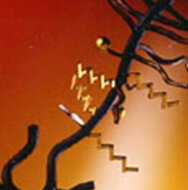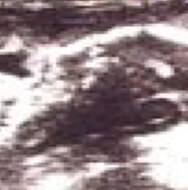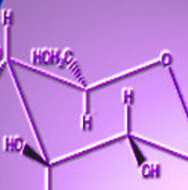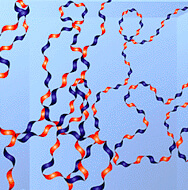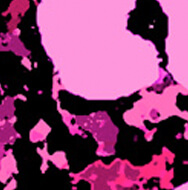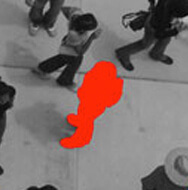It is often said in Japan that blood type decides personality. Is there scientific evidence for this?
Many kinds of blood types have been found ever since Landsteiner discovered the ABO blood types in 1901. However, the ABO blood types remain the best known. The differences in blood types are classified mainly by differences in sugar chain structures on the surface of red blood cells. In Japan, personalities are often classified by blood type, but the ABO blood types are classified according to structural differences in the sugar chains on the surface of red blood cells, and no relationship has been discovered between the sugar chain and personality.
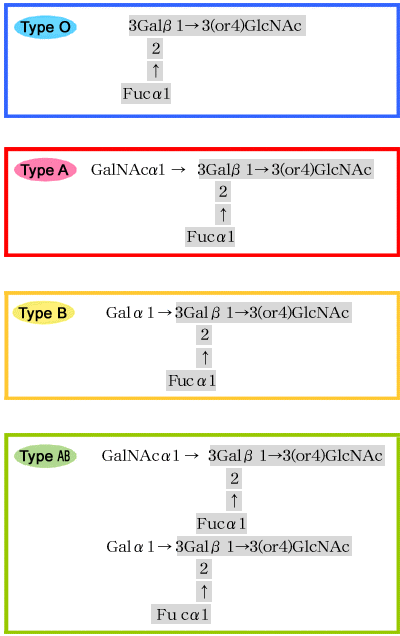
▲ The blood type having type A sugar chain is referred to as type A, the blood type having type B sugar chain is referred to as type B, and the blood type having only the sugar chain structure common to A and B is referred to as type O. Further, the blood type having both sugar chains of types A and B is referred to as type AB.
As a result of detailed investigations of each of the genes of ABO blood types in the 1990s, it has been discovered that A and B genes are blueprints of enzymes that respectively add a different sugar on the sugar chain portion of a complex glucide called "type H substance." The substance synthesized by the work of the respective enzyme is referred to as "type A substance" in the case of the A gene and "type B substance" in the case of the B gene, and a type A person has type A substance, a type B person has type B substance, and a type AB person who has both A and B genes has both type A and B substances on the surface of his/her red blood cells.
In contrast, the O gene is a blueprint that lacks both enzymes that transfer sugar chains that characterize types A and B. Accordingly, a type O person has type H substance, which is parental to type A and B substances without modification on the surface of red blood cells.
The reason a person with the AO combination becomes type A or a person with the BO combination becomes type B is that if any A or B gene exists, all of the type H substances become type A or type B substance. One may recall learning in biology class that type A and B genes have dominance over type O according to Mendel's law of heredity.
The base sequence of ABO blood type genes of representative primates has been clarified recently, and based on this it has been hypothesized how blood types came to be.
However, even with the most advanced research, the biological meaning of blood type genes has not yet been discovered. Its "meaning" shall be further investigated in the future.
If the blood type genes did not exist, would there be any differences?
It does not necessarily follow that there won't be any difference, and that is what's profound and interesting about biology.
For example, one of the causes thought to induce gastric ulcer, a kind of bacteria called Helicobacter pylori, is said to enter the stomach wall using type H substance as a foothold. If all humankind were blood type O, there may have been a world full of gastric ulcer patients. In other words, the body may have protected itself from bacterial or viral infection by varying its cells by way of sugar chains. Of course, this example is only hypothetical, but there are many researchers who believe this and continue their researches based on this belief.
There is no doubt that "diversity" is essential for organisms to survive when environments change. The genes of ABO blood types give us a glimpse of the importance of diversity for organisms, as well as an indication that sugar chains play an important role in producing the diversity.
♦Glycoforum
In "GlycoWord", which is a subcategory of "Glycoforum", key words of research in glycoscience are classified into genres, and a specialized researcher in that field has written a commentary.
Commentary on Blood Type Substances and Cell Adhesion









